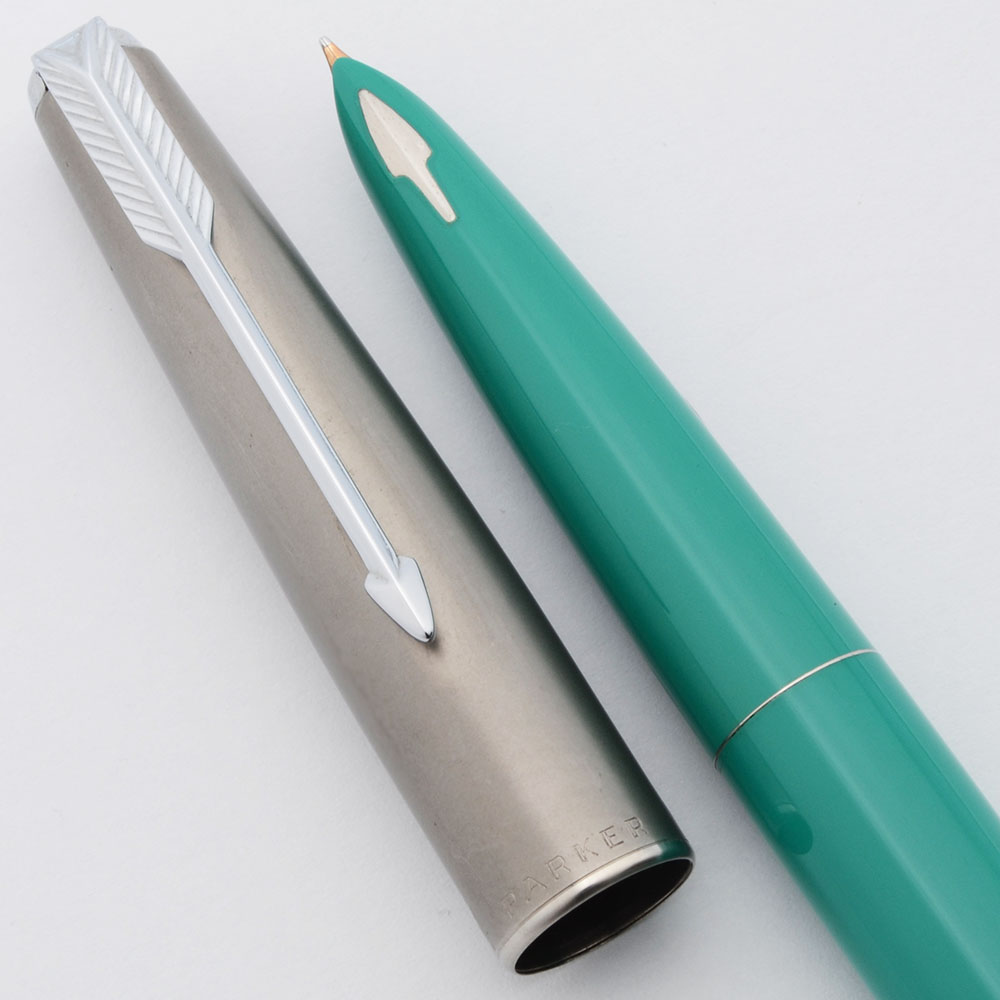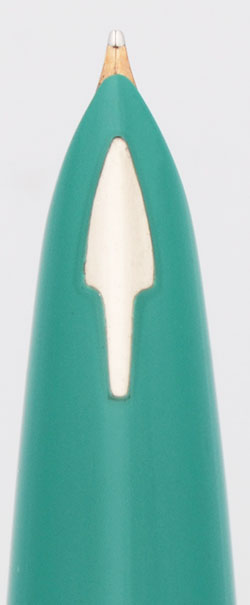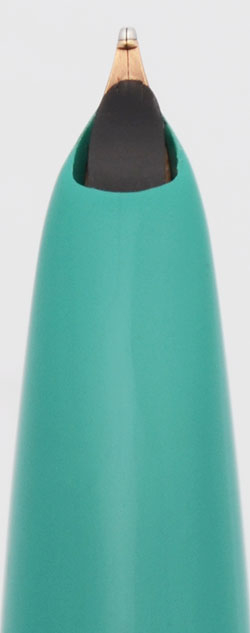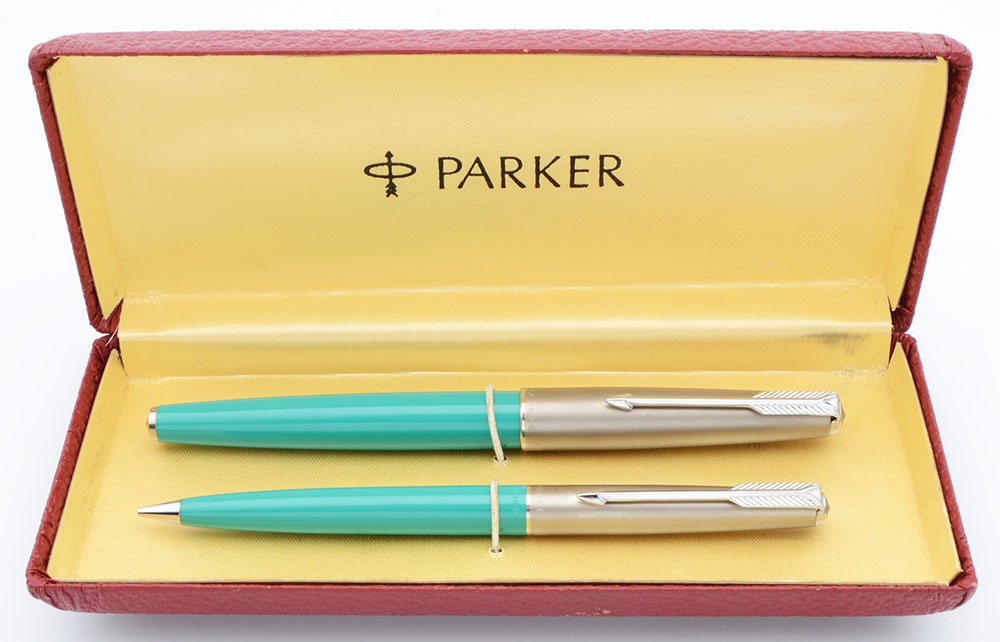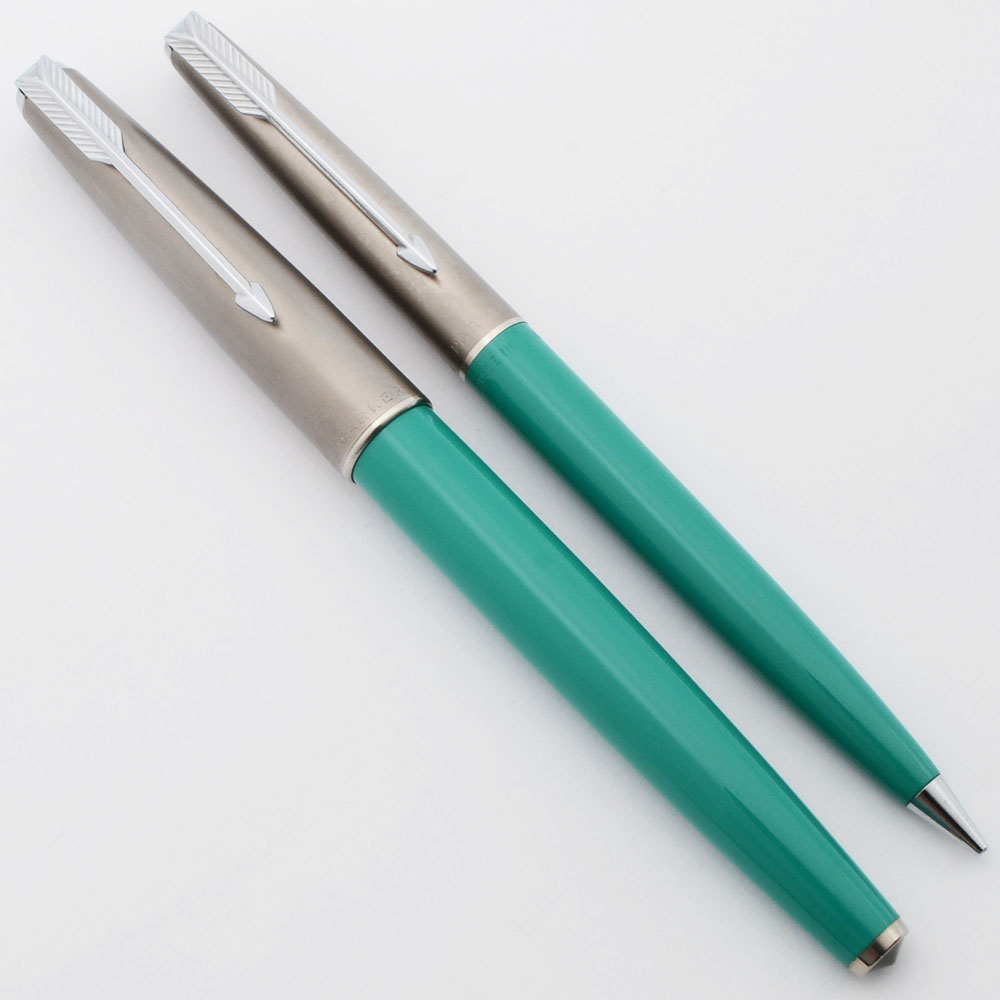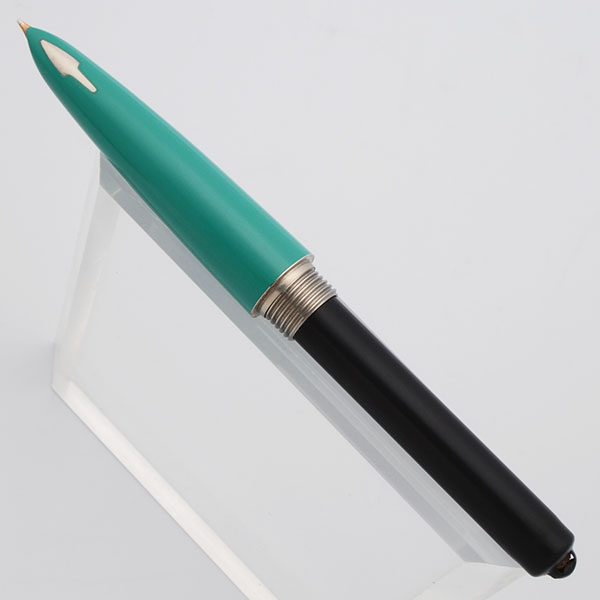Product Description
Type Fountain pen with unique filling system
Product Name Parker 61 Vista - refers to the cap used. There is some contradictory information out there on the different versions but we are calling the Mark I the thin clutch ring version and the Mark II the thicker clutch ring version. (The Mark III would be the cartridge/converter version. The clutch ring is the band between the section and barrel.)
Manufacturer and Year Parker, USA -- Circa 1959, 1959 is the only formal year the Mark I was in this color.
Length The fountain pen: 5-1/4"; the mechanical pencil: 5"
Filling System Capillary filling system which is unique to this model. See further details below.
Color Hard to find "Surf Green" body with brushed steel cap. Jewels on either end of the pen. "Surf Green" is the brightest and the lightest colored of the various Parker 61 blues and greens.
Nib Medium 14k nib is smooth, with good tipping material. The pencil takes .9mm leads. A packet of leads will be included.
Condition Excellent +, in box, with no cracks, chips, dents, or dings. This is a beautifully colored set, with great shine and simple elegance. The fountain pen has a line of marks caused by the cap lip. The cap has a few small shiny spots and marks. The clip and clip ring look great. The top jewel has a little brown spot on its peak. The end jewel on the barrel looks good. The mechanical pencil barrel has some very light scratching. The cap looks excellent. The top jewel is a tad darkened along one edge. All imprints are clear.
A word or two about the Parker 61 Capillary Filling System. If you are not familiar with this unique design, you should read this.
Here is how you fill a Parker 61, and an insight into how the pen actually works. Unscrew the barrel and stick the back end of the pen (aka the capillary cell) into a bottle of ink. Wait a few minutes (probably more like a half hour when you first start one of these older used ones), and let the ink wick up into the capillary cell. The cell contains a sheet of perforated plastic that has been given a 3-D pattern resembling tire tread, and rolled up. The perforations allow ink to seep between the rolled-up layers, and the tread pattern maintains space between the layers. In the middle of this tube, which runs the entire length of the capillary cell, is the feed. To keep things clean, the capillary cell has on a coating of teflonon the outside that is intended to shed ink as the user withdraws the pen from the ink bottle, leaving very little ink to be wiped off. The end of the barrel contains a spring-loaded thingey which covers the open end of the capillary tube, but still allows it to vent.
